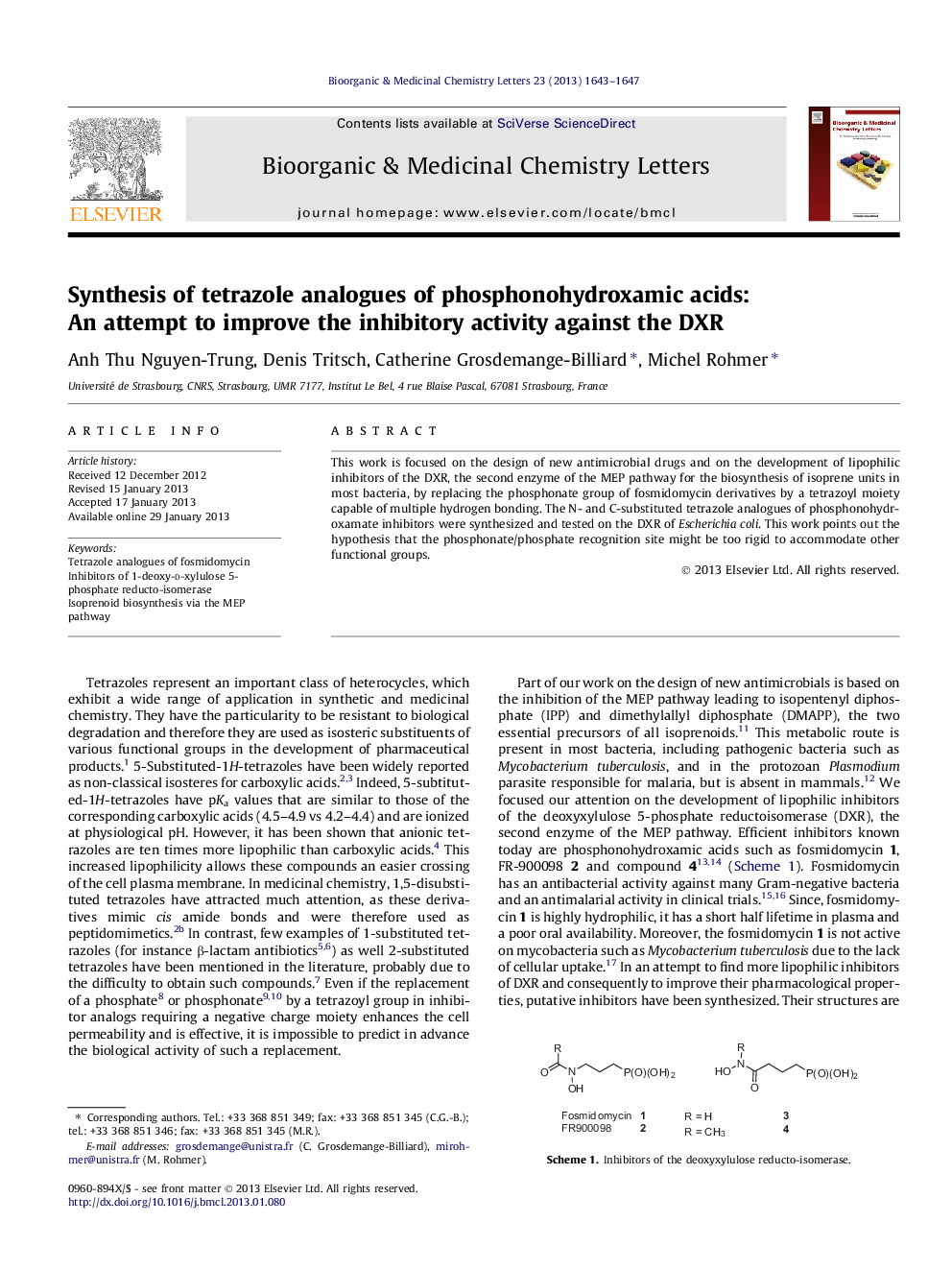| Article ID | Journal | Published Year | Pages | File Type |
|---|---|---|---|---|
| 1370329 | Bioorganic & Medicinal Chemistry Letters | 2013 | 5 Pages |
Abstract
This work is focused on the design of new antimicrobial drugs and on the development of lipophilic inhibitors of the DXR, the second enzyme of the MEP pathway for the biosynthesis of isoprene units in most bacteria, by replacing the phosphonate group of fosmidomycin derivatives by a tetrazoyl moiety capable of multiple hydrogen bonding. The N- and C-substituted tetrazole analogues of phosphonohydroxamate inhibitors were synthesized and tested on the DXR of Escherichia coli. This work points out the hypothesis that the phosphonate/phosphate recognition site might be too rigid to accommodate other functional groups.
Graphical abstractFigure optionsDownload full-size imageDownload as PowerPoint slide
Related Topics
Physical Sciences and Engineering
Chemistry
Organic Chemistry
Authors
Anh Thu Nguyen-Trung, Denis Tritsch, Catherine Grosdemange-Billiard, Michel Rohmer,
